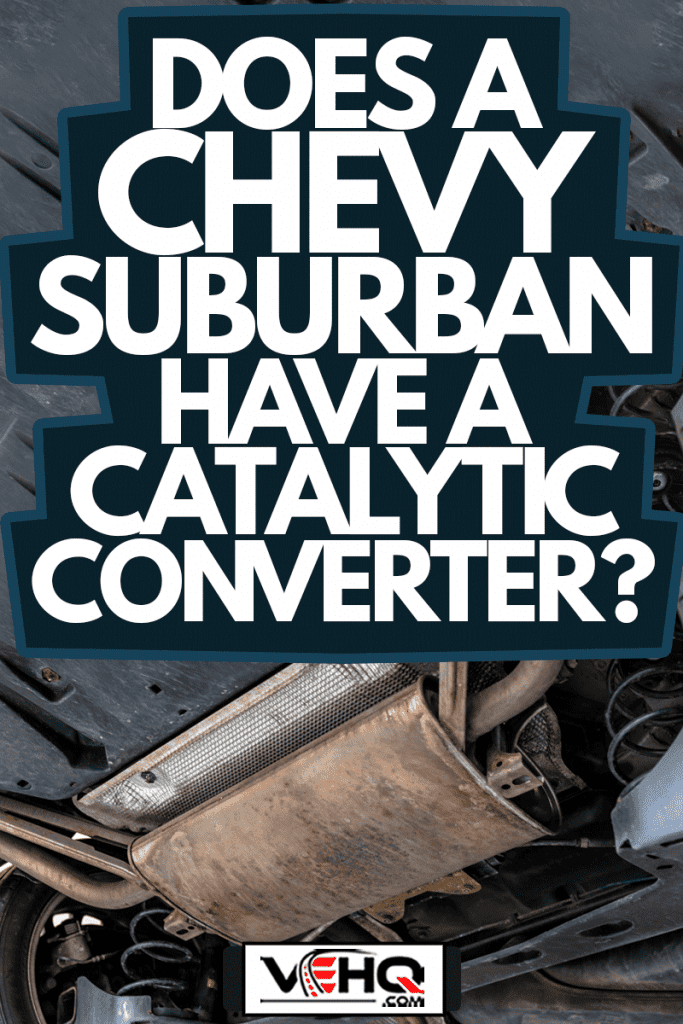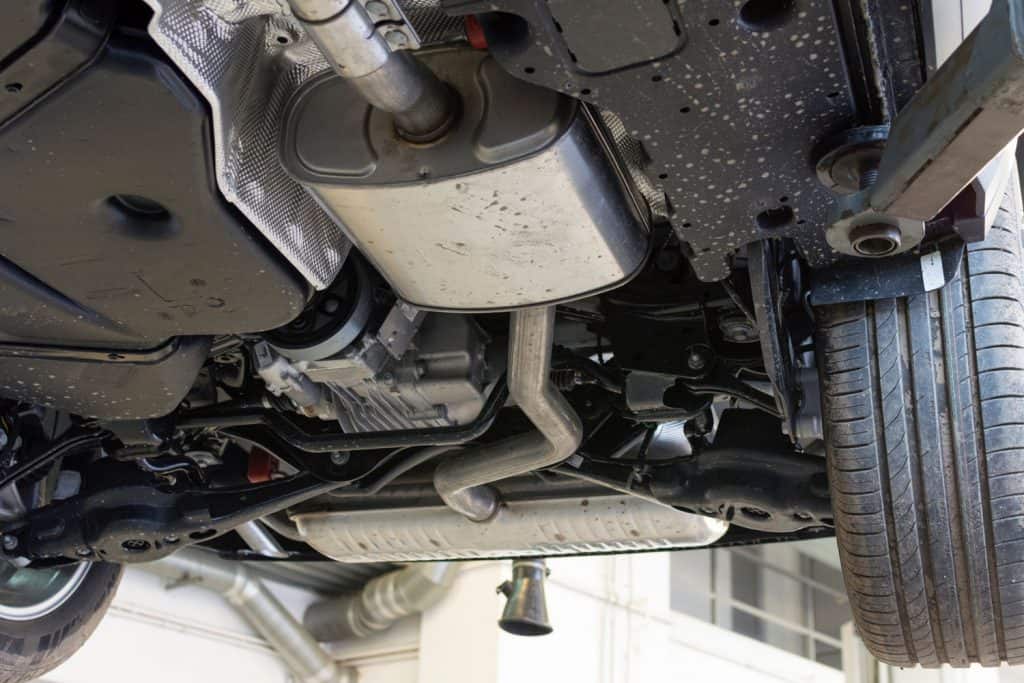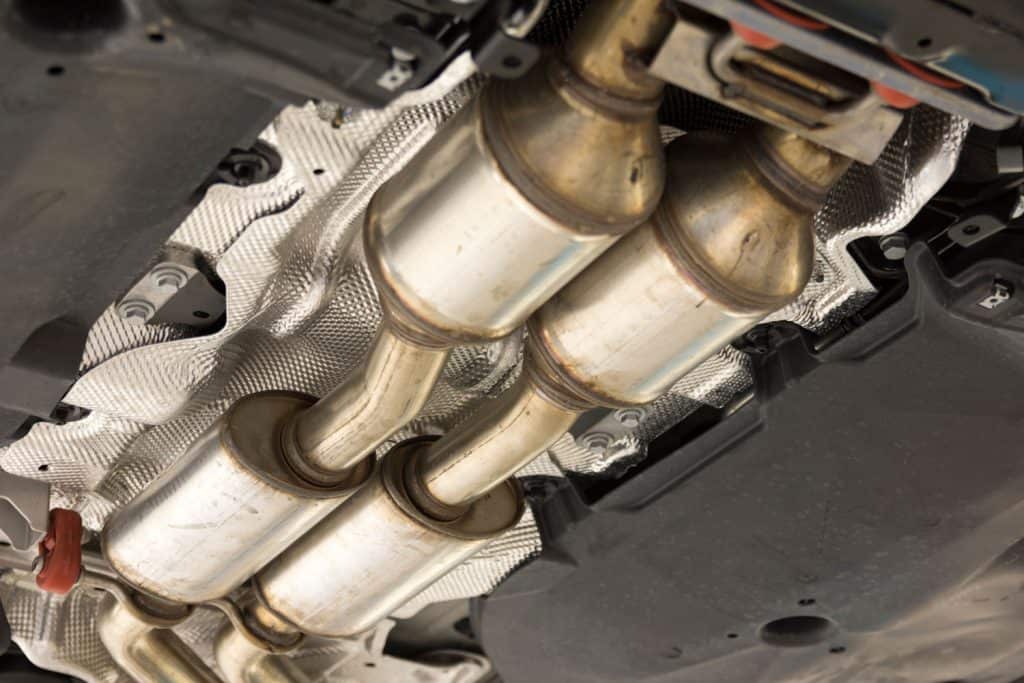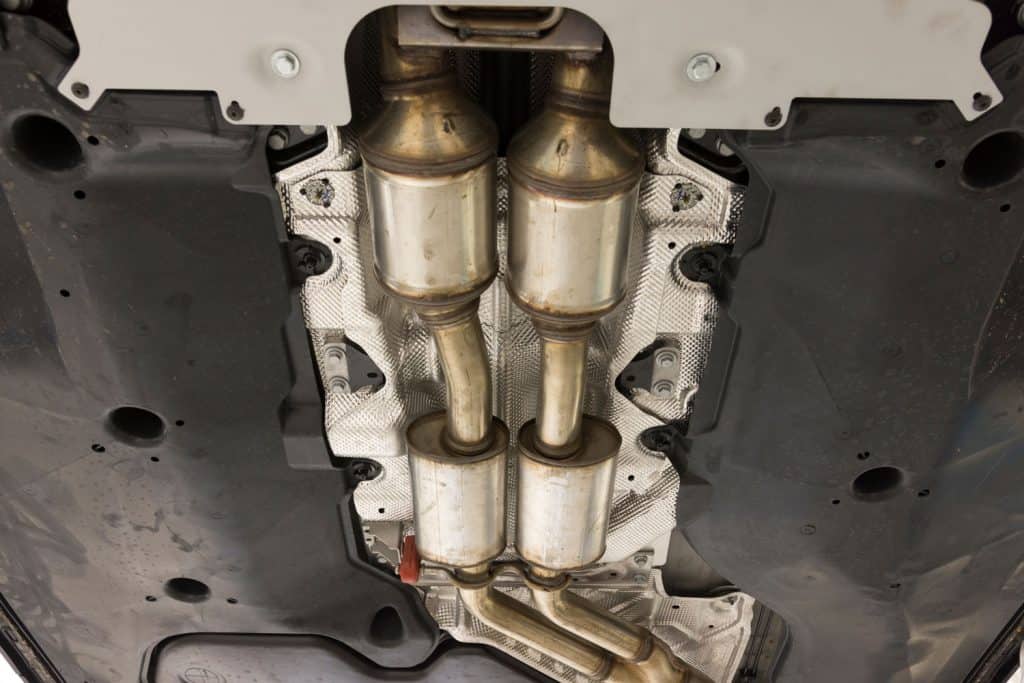Catalytic converters have a reputation for being expensive and hot targets for theft. Why do we need them, and do all cars even have them? We've done the research, and we have the story for you.
The Chevrolet Suburban uses a catalytic converter to meet federal emissions standards. If your catalytic converter is missing, your vehicle may run less efficiently and fail to pass inspection.
We'll talk more about what a catalytic converter is and does, as well as the symptoms of a bad catalytic converter. We'll also cover the costs of cleaning and replacing catalytic converters. Read on to learn all about it.

The Chevy Suburban's Catalytic Converter
The Suburban's catalytic converter can be found in the undercarriage. It is part of the exhaust system between the engine and the muffler.

The catalytic converter can go bad over time. They are also prime targets for theft and are sometimes stolen off a vehicle. You may need to purchase a new catalytic converter for your Suburban in these cases.
How much is a catalytic converter for a Suburban?
Catalytic converters range in price for every vehicle. Fortunately, many auto sites such as Magnaflow.com allow you to search by your model. Knowing the model only is not enough. It is still essential to check that the converter is compatible with your specific engine and model year.
Catalytic converters don't come cheap. Their catalytic system uses precious metals, which increases their cost and causes them to be a common target for theft.
The least expensive direct-fit catalytic converter for the Suburban on Magnaflow costs $645 and is only compatible with the 2007 Suburban with the V8 6.0L engine. It also is only rated for federal standards, not California's. Some direct-fit catalytic converters for the Suburban cost more than $4,000!
With prices as high as they are, you may wonder if there are cheaper alternatives. This has many shoppers looking at universal catalytic converters.
Can you use a universal catalytic converter on a Suburban?
Direct-fit catalytic converters are not your only option. You can often get universal catalytic converters much cheaper. Not only are they less expensive, but they can also work for a larger number of vehicles, including the Suburban.
Always be sure to check the list of compatible vehicles before purchasing a catalytic converter, even ones that claim to be universal. If you live in California, make sure it is also compliant with the state's emission regulations which are more strict than the federal rules.
Click here to see this California-compliant universal catalytic converter on Amazon.
Universal catalytic converters do have their downsides, though. Installing them often requires modifying the exhaust system, including cutting pipes to the necessary length. You can see an example of a universal catalytic converter installation in the video below.
What is a catalytic converter?
A catalytic converter is a critical component of your vehicle's exhaust system. These devices take harmful gases created as by-products of your internal combustion engine and convert them into less harmful gases.
Inside the catalytic converter is a honeycomb-like structure made of platinum and rhodium. When harmful molecules made of nitrogen and oxygen pass through this honeycomb, this structure removes nitrogen atoms from the molecules, separating them into harmless nitrogen and oxygen gases.

Without a catalytic converter, those gases pass through in their toxic state. Federal rules limit the amount of the gases that are allowable in emissions, meaning your vehicle will likely fail an emissions test without the catalytic converter.
The state of California has stricter limits on emissions than the federal government, so that you will need a California grade, also known as CARB-compliant, catalytic converter for a vehicle registered in that state.
The catalytic converter is also an essential part of the exhaust system that connects to the muffler. If it is missing, your exhaust system will be incomplete, leading to other problems. Without a complete exhaust system, your engine may run more roughly, especially when accelerating, and will sound very loud.
You can learn more about catalytic converters in our article, "How Big Is a Catalytic Converter?" You'll learn about their size as well as their function and location on your vehicle.
How does a car act when the catalytic converter is bad?

While catalytic converters typically last a long time, they can and do go bad. If you're catalytic has gone bad, your car will likely exhibit some or all of the following symptoms:
- a sulfurous smell from the exhaust
- dark or black exhaust smoke
- slower or delayed acceleration
- reduced fuel efficiency
Many of these symptoms can have causes besides a faulty catalytic converter. For example, sluggish acceleration, while a sign of a bad catalytic converter, is more often caused by dirty air or fuel filters.
However, a sulfurous, rotten egg smell when you run your vehicle is the strongest evidence that the catalytic converter has gone bad.
When a catalytic converter isn't working, it cannot convert dangerous gases into less harmful forms. One of these is hydrogen sulfide, and it has a distinct rotten egg smell. If you notice this or any other symptoms, you should take your car to a mechanic for inspection.
How to know a catalytic converter is bad
Catalytic converters are expensive components to replace. Not only will you have to pay for the new catalytic converter, expensive on its own, but they usually require welding, leading to more labor costs.
For this reason, you might want to make sure it's your catalytic converter causing the issue and not some other problem. While a mechanic can diagnose the problem for you, you can also do it yourself. A plugged-up catalytic converter will lead to increased pressure in the exhaust system.
You can see how to gauge the pressure to diagnose a bad catalytic converter in the video below.
How long can I drive with a bad catalytic converter?
If you have reason to believe your catalytic converter has gone bad, but your car is still running, it is likely only partially plugged. While you can drive your vehicle normally in this state, you are likely to notice decreased performance. At this point, you should drive your vehicle to a mechanic, or it may get completely plugged.
If your catalytic converter is completely plugged, your vehicle will likely not start at all. You will need to have it towed to a mechanic for service. For this reason, among others, it is best not to drive too long with a bad catalytic converter.
Can a car run without a catalytic converter?
While a plugged catalytic converter can stop your car from running, a vehicle without a catalytic converter can, technically, still run.
However, you will likely experience several problems running your vehicle without the catalytic converter.
The first will be the noise. This is how many people first notice their catalytic converter is missing, often due to theft. Your vehicle will sound significantly louder without the catalytic converter connecting the exhaust and the muffler, especially when accelerating. You will also likely notice your vehicle accelerating and driving less evenly.
Of course, without your catalytic converter, your vehicle will release more harmful emissions. This will create a worse smell, but it can also fail an emissions test during a vehicle inspection.
Is it worth fixing a catalytic converter?

If your catalytic converter is causing issues simply because it's clogged, you may be able to clean it out. A mechanic can use a pressure washer to clean out built-up deposits in the catalytic converter.
While there are many home remedies for cleaning catalytic converters, from soap and water to sodium hydroxide, results with these techniques tend to be mixed. Furthermore, you can damage your catalytic converter or other components if not done carefully.
When cleaning your catalytic converter, it is best to leave it to a professional unless you have extensive experience and knowledge.
Is it worth it to replace a catalytic converter?
If your catalytic converter is plugged beyond repair and needs to be replaced, you might decide it's not worth the cost. Beyond the fact that catalytic converters are expensive on their own, you will also be looking at likely paying between $75 and $200 per hour for labor costs.
Furthermore, catalytic converters last a long time, typically ten years or longer. If yours needs replacing, it's likely that your vehicle already has many miles on it and will likely need more work soon.
It's also possible other engine trouble caused your catalytic converter to get plugged in the first place. If this is the case, it could mean you will need even more expensive repairs after replacing the catalytic converter.
Ultimately, the decision will come down to you whether it's worth it to replace a catalytic converter. The important thing to remember is that the replacement costs are likely to be expensive and may foretell other upcoming maintenance costs.
With the costs of replacement so high, it is undoubtedly the case that an ounce of prevention is worth a pound of cure when it comes to catalytic converters. You can learn more about keeping yours in top shape in our article, "How Long Does a Catalytic Converter Last?"
Final Thoughts

Catalytic converters are an essential component of any internal combustion vehicle. Not only do they help protect the environment by converting harmful gases; they also keep your exhaust system intact.
Now you know more about how to diagnose a bad catalytic converter and clean your catalytic converter or even replace it when necessary.

